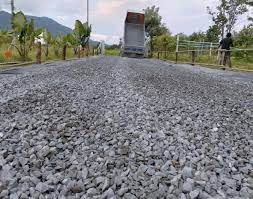Landfilling, whilst frequently looked at negatively due to the environmental affects, continues to be a necessary part of spend administration in several territories globally. Accepting land filling (รับถมดิน) being a needed element of squander fingertips methods requires acknowledging both its negatives as well as its potential advantages inside the broader circumstance of eco friendly squander control.
For starters, it’s vital to understand the enviromentally friendly consequences connected with landfilling. Landfills release greenhouse gas including methane, a strong reason for global warming, as natural waste decomposes anaerobically. Moreover, leachate from landfills can ruin dirt and drinking water options or else properly handled. These environmental issues underscore the importance of minimizing spend technology and raising trying to recycle and composting initiatives to lower reliance on trash dumps.
However, even with its drawbacks, landfilling serves as a sensible answer for handling non-recyclable and non-compostable squander. Contemporary landfill design and style and management practices try to mitigate enviromentally friendly influences by implementing liners, leachate selection methods, and fuel record elements. Furthermore, nicely-regulated landfills provides a more secure and much more managed fingertips choice in comparison to against the law dumping or substandard waste management practices.
Taking landfilling consists of being familiar with its part throughout the waste materials managing hierarchy. When reducing and recycling waste ought to always be prioritized, particular components, such as harmful waste or residue from recycling procedures, might necessitate disposal in trash dumps. Embracing landfilling included in a diverse spend management strategy acknowledges the requirement for multiple methods customized to several waste streams and native contexts.
Furthermore, landfills may offer possibilities for source of information rehabilitation through tactics like land fill mining, in which valuable resources are taken from older land fill web sites for reuse or recycling. Additionally, some landfills are repurposed as recreational areas, solar energy farms, or other amenities as soon as they get to ability, showcasing the chance of lasting terrain use submit-closure.
To summarize, accepting landfilling requires recognizing its role as being a needed but imperfect part of spend managing. While endeavours should be created to decrease reliance on trash dumps through squander reduction and diversion techniques, they remain a pragmatic answer for managing certain types of spend. By implementing efficient rules, purchasing modern technology, and exploring prospects for resource healing, trash dumps can be integrated into a wider platform of eco friendly spend control procedures.
